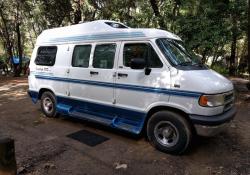#geeklife: weBoost 4G-X OTR Review
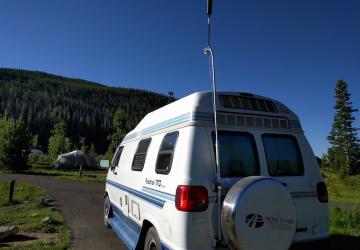
Will a cellular booster help me stay connected on my epic working road trip?
I'm a Linux geek, and I think I safely can assume everyone reading an article in Linux Journal identifies themselves as Linux geeks as well. Through the years I've written about many of my geeky projects here in Linux Journal, such as my Linux-powered beer fermentation fridge or my 3D printer that's remotely controlled using a Raspberry Pi and Octoprint software. The thing is, my interests don't stop strictly at Linux, and I doubt yours do either. While my homebrewing, 3D printing and (more recently) RV interests sometimes involve Linux, often they don't, yet my background means I've taken a geek's perspective and approach to all of those interests. I imagine you take a similar approach to your hobbies and side projects, and readers would find some of those stories interesting, useful and inspirational.
We discussed this at Linux Journal and realized there should be a space for Linux geeks to tell their geeky stories even if they don't directly involve Linux. This new series, #geeklife, aims to provide a place where Linux geeks can talk about interests and projects even if they might not be strictly Linux-related. We invite you to send proposals for #geeklife articles to ljeditor@linuxjournal.com.
For this first #geeklife article, I'm telling the story of a geeky, connected working road trip I just took in my RV, and within that context, I also review a particular piece of hardware I hoped would make the trip possible, the weBoost Drive 4G-X OTR. In the interest of full disclosure, Wilson Electronics provided me with this review unit, and I did not purchase it independently.
Working Remotely
My job is 100% remote. It took me many years of braving multi-hour California Bay Area commutes and turning down opportunities to find a job where I finally could work completely from home. Smart organizations are finally beginning to realize the many advantages to having a remote workforce, but I've found it works best if you have the right team, the right tools and the bulk of the workforce is remote. When everyone is distributed, everyone relies on the incredible modern collaboration tools currently available, and you have focus and incredible productivity when you need it while still being able to communicate with your peers.
My wife is a freelance writer and has worked from her home office long before I also worked from home. Once I also landed a job where I was completely remote, we posed the following question to ourselves: in theory, we could work from anywhere with a decent internet connection, but in practice, is that really something we could do? What would that kind of working trip look like?
The key piece in the discussion of working from anywhere was our recent purchase of a used 17' RV van. Without an RV, we would have been talking about working from various hotels, or perhaps renting a cabin for a few weeks in some remote location (but not so remote that it didn't have a solid internet connection). With the RV, a whole world of national parks, campgrounds and other destinations opened themselves up to us, so we started planning an epic two-week working road trip that would clock a few thousand miles and hit multiple states and national parks before we were done. We have a school-aged son, so even though we could work from anywhere in theory, we couldn't do it while he was still in school, so our plan was to take this trip at the start of his summer break.
It just so happened that our trip coincided with a speaking engagement I had in Utah. We live in the California Bay Area, so this helped provide a main anchor point for our trip. We would leave the Bay Area on the first weekend and drive toward Southern Utah via Las Vegas. Then we would spend a few days camping and working in Bryce Canyon. Next I would attend my conference, and then we would spend the next weekend traveling from Utah into Colorado, stay a day at Dinosaur National Quarry in Utah and ultimately camp around Rocky Mountain National Park. From there, we would take a short drive to a friend's house, spend the night and work from there the following day, and then spend the rest of the week working outside of Aspen before making our way home the final weekend. The overall idea was to reserve our big travel days for weekends and, for the most part, keep our day-to-day travel minimal during the week, especially during our main working hours.
The Connectivity Problem
One of key challenges in making a trip like this work was the fact that both of us need a solid internet connection to do our jobs. If you were just taking a two-week vacation, you might be able to live without an internet connection the entire time, but for us, without a connection, we weren't working. Although I knew we had a few anchor points (the conference hotel and our friend's house) that would have good internet connections, the rest of the time, we would be on our own.
I had researched mobile satellite internet options in preparation for this trip, but I was stopped by the cost. Although the bandwidth in modern satellite internet services would have worked fine, you are looking at a $1,000 minimum investment to get a portable satellite dish that you have to aim yourself (which takes between 15 and 45 minutes each time). For around $6,000, you can invest in a dish that mounts to the roof of your vehicle and can aim itself automatically. In either case, you also are looking at a minimum $50-per-month metered plan with a two-year contract. While a mobile satellite dish means we literally could access the internet from anywhere in North America, we just couldn't justify the cost for a two-week trip.
Since satellite was out, that left cellular internet. We currently use Project Fi, a low-cost Google cellular service that combines the Sprint, T-Mobile and US Cellular networks into a single network and hops to whichever network happens to have the strongest connection. Project Fi allows tethering and has reasonable data rates (with a cap that converts over to "unlimited" once you reach it), so we decided just to tether from our phones for the trip. This meant we would need to make sure that if we camped at a national park, it was at a campground that had a reasonable cellular connection. When we looked at Project Fi's coverage map, it looked like most of the places we were planning to visit had okay coverage, so we figured we would make some basic plans and in the worst case, go to an RV park instead of a traditional campground and use the RV park's (notoriously oversubscribed) WiFi.
Of course, this reliance on cellular tethering presented a dilemma. We were basing a majority of this trip, and deciding where we could say, all on whether my cell phone could get a solid connection. On top of that, my RV is a steel and fiberglass vehicle, where, when parked, it has most of the windows covered in metal Reflectix to keep the inside cool. Although the RV isn't a Faraday cage, it's not far from it. I started realizing that I needed some kind of insurance policy to make sure I got the strongest connection I could get, and that's when I started researching cellular boosters and discovered the weBoost 4G-X OTR.
The weBoost Series
It turns out that Wilson Electronics makes quite a few cellular boosters under the weBoost brand both for vehicles and homes. The thing that attracted me to the 4G-X series in particular was that although it isn't exactly cheap (retail $500), it claimed up to a 32X boost in signal, was compatible with my networks and was designed to be used in a vehicle. These boosters use an external antenna mounted on the vehicle to get the best possible signal, and that antenna connects to an amplifier that's powered off the vehicle's battery. This amplifier boosts the signal and sends it to an internal antenna you place near your phone. It's important to note that to get the benefit of the signal booster, you need to place your phone within a few feet of the internal antenna—the closer to the internal antenna the better.
The 4G-X series has a few different models in that product line. The base model is designed for car use and has a small magnetic-mount antenna designed to stick to the roof of a car. There is also an "OTR" model that is designed for truckers with a large 18" external antenna on a pole designed to be mounted to a semi's side mirror and a small internal antenna designed to velcro next to the driver's seat. Finally, there's a newer "RV" model that removes the pole from the external antenna, so it can mount to the roof of an RV more easily and replaces the smaller internal antenna with a slightly larger one designed to sit on top of a counter, so you can aim it back at the living quarters of an RV.
I looked at each of the models, and even though I technically have an RV, I chose the OTR model (Figure 1) for a few reasons. For one, while each antenna claimed to provide similar amplification, the OTR antenna seemed the strongest. For another, I was going to have to build an antenna mount for the antenna regardless, so I thought the taller 18" external antenna would help me to get extra height when I was parked compared to the RV antenna. Finally, I preferred the smaller internal antenna so I could use velcro to mount it behind the driving area while driving, and then re-aim the antenna if necessary while parked. Of course, if I change my mind, I always can order the other types of antennas later.
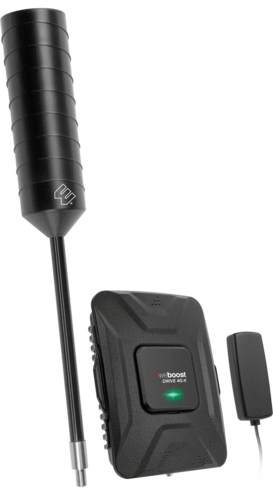
Figure 1. weBoost 4G-X OTR Hardware
weBoost 4G-X OTR Tech Specs
Frequency:
- Band 12/17 — 700MHz
- Band 13 — 700MHz
- Band 5 — 850MHz
- Band 4 — 1700/2100MHz
- Band 2 — 1900MHz
Max Gain: 50 dB
Power Req: 6V/2A
Connectors: SMA Female
The Installation
Installing the weBoost 4G-X OTR itself was relatively straightforward and fast with the bulk of the work revolving around running cables and my desire to create a telescoping antenna mount at the back of my vehicle. Many RVs provide some kind ladder at the back of the vehicle so you can access the roof, but my van didn't, so my solution was to mount a length of PVC pipe to the spare tire bracket on my rear door, and inside it put a length of electrical conduit with a 90° curve on the end. I then could mount the antenna to the end of the conduit and while driving leave the conduit inside the PVC pipe secured with a bolt and pin that ran through both pipes (Figure 2). When I parked, I then could remove the pin, telescope the antenna an extra 4' up and secure it back in place with the same pin (Figure 3).
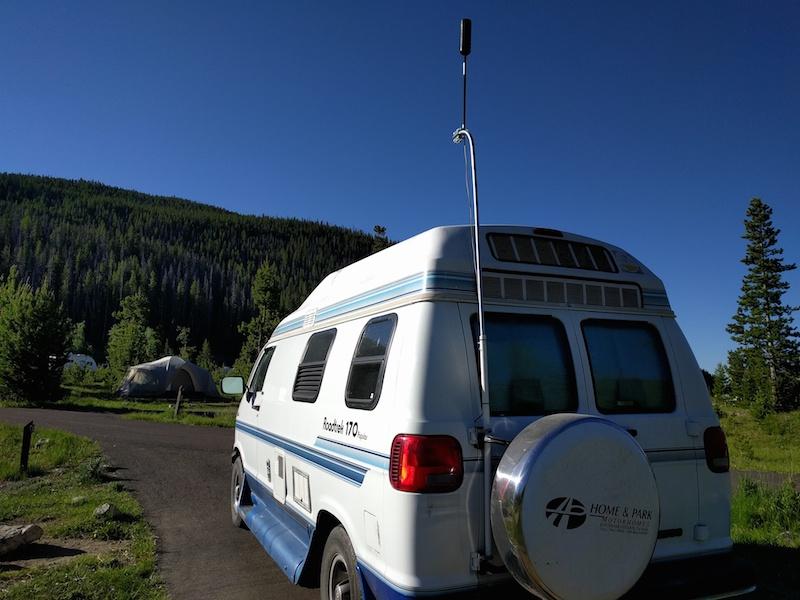
Figure 2. The OTR Antenna in "Camping Mode"
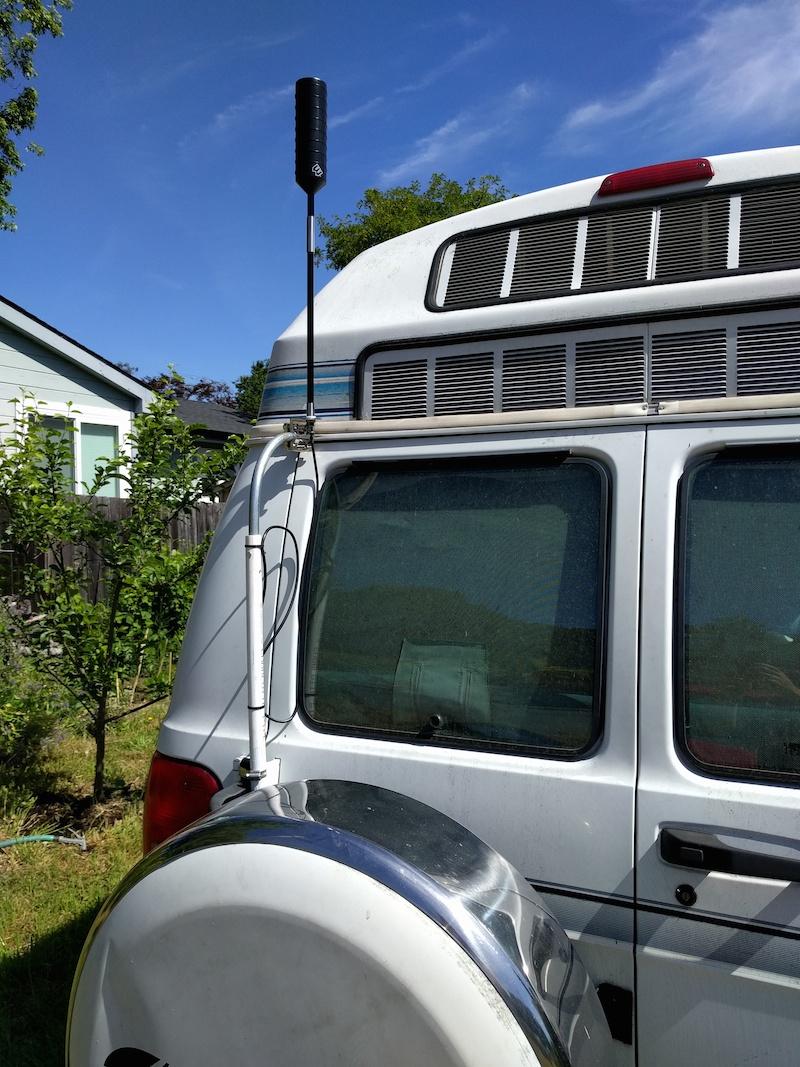
Figure 3. The OTR Antenna in "Driving Mode"
Once the antenna was in place, I telescoped it to its maximum height and then ran the antenna wire through the back door, under the back seats, through the side wall and inside a cabinet where I also mounted my TV. The amplifier is powered off a standard 12V car outlet, so I made sure to put it close enough to a 12V outlet that its (rather long) cable easily could reach. I ultimately mounted the weBoost amplifier itself just above the TV, so I can tell whether it's on and whether it's getting any interference (Figure 4).
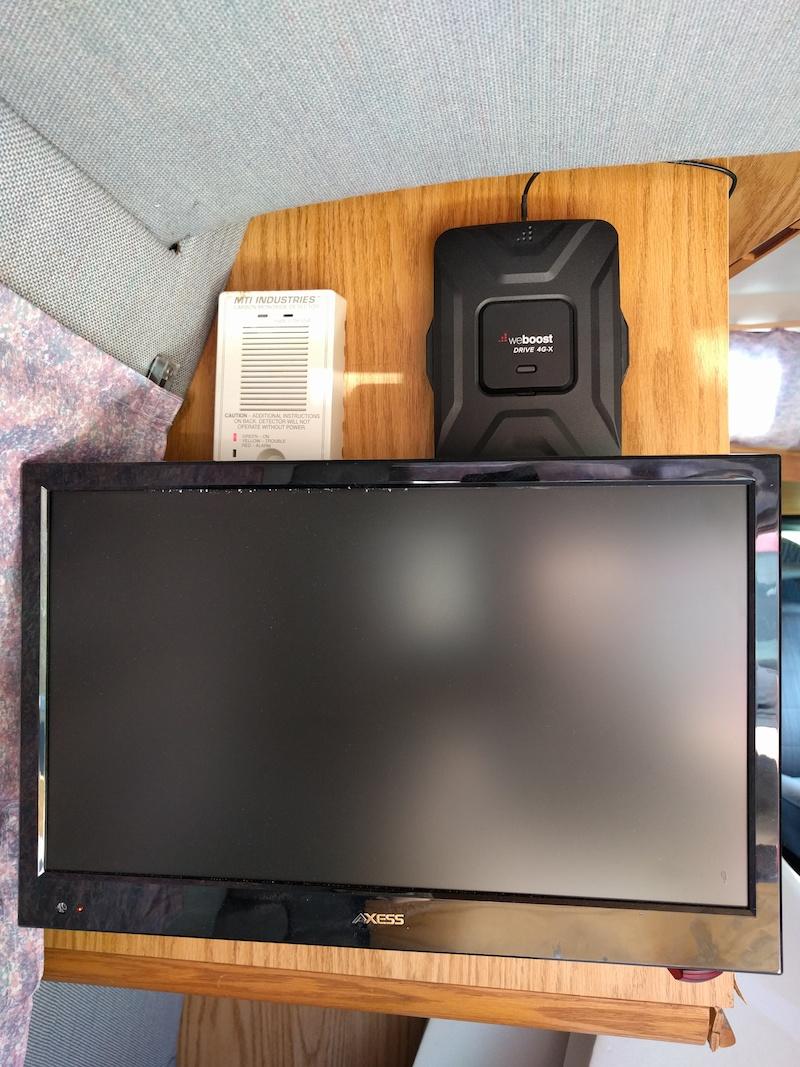
Figure 4. The Amplifier Mounted on My Cabinet Wall
The installation instructions state that you want to make sure the external and internal antennas are as far apart as possible (at least six feet apart) so they don't interfere with each other. If they do interfere, the amplifier will reduce its signal and an LED will blink to let you know about the problem, so when installing everything, it's important to try to mount your external and internal antennas as far away from each other as possible. In my case, I mounted the external antenna at the back of my vehicle and ran the internal antenna from a rear cabinet in the van where the amplifier was mounted toward the front of my van. That way, we not only would avoid interference, we'd also get the strongest signal boost while we were driving.
All in all, the installation took only a couple hours, the bulk of which was building my homegrown antenna mount and running wires behind walls inside the RV. Otherwise, just connecting the wires and mounting the amplifier on the wall would have taken only a few minutes. Once all the wires were run, I turned it on, and everything worked out of the box. The amplifier itself pulled about .6 amps from my battery when on, and even in my driveway, I noticed a boost inside the RV from about two bars LTE to full coverage.
The Trip
The first test of the weBoost was on our first day. We were driving from the California Bay Area through Southern California into the Mojave desert and ultimately ending the long day in Las Vegas. While I was driving the whole time, my wife was using her phone and noticed a significant improvement in her connection throughout the drive—to the point where even through some of the more remote parts of the drive, including the Mojave desert, she had a solid internet connection. This is particularly notable considering the fact that we were in a large steel vehicle that blocks quite a bit of signal.
The real test was the second day when we set camp for a few days in the North campground at Bryce Canyon (Figure 5). First, I was pleasantly surprised to find that Bryce Canyon had pretty respectable cellular coverage throughout the main areas of the park—I had a bar or two of LTE in the main areas of the park near the entrance and dropped down to 3G only when I drove miles into the park. At my campsite itself, I had a few bars of LTE at -117dBm, but once I extended my antenna and turned on the booster, I placed my phone on top of the internal antenna, and that jumped up to full bars LTE at -87dBm (a 30dBm gain).

Figure 5. A Lunchtime Stroll at Bryce Canyon
When we started working out of the campground, we quickly ran into an issue, not with our cellular network but with our WiFi. Because our computers were tethering from my cell phone, we easily could work from inside the RV, but the phone's limited WiFi range made it difficult to work too far outside. Fortunately, I also had installed a Vonets WiFi booster as part of my RV offsite backup project, so I was able to configure it to boost the cell phone's WiFi signal and set up my office outside in the shade (Figure 6). From there, I was able to work comfortably with a solid connection. In fact, on the last day at the park, I even participated in a video conference call and was told it was the clearest I had ever been.
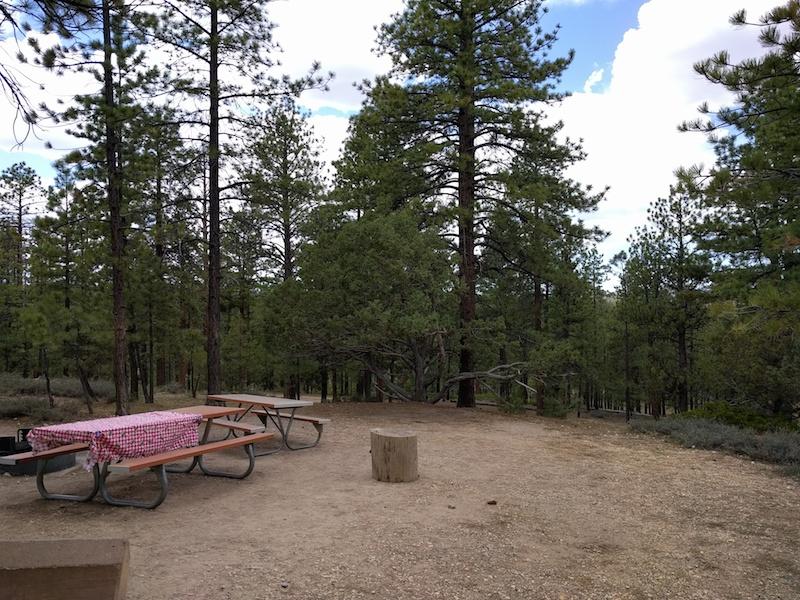
Figure 6. My Office at Bryce Canyon
The first time we were shocked with the weBoost performance was when we drove within Bryce Canyon to see its natural bridge. When we stepped out of the RV, I noticed my signal had dropped to zero bars CDMA, and the connection details hopped between no signal and a very weak signal. Although I didn't particularly need the internet at that point, I couldn't help but test the booster, so I fired it up, placed my phone over the internal antenna and noticed I got a boost up to a few bars LTE.
We left Bryce Canyon to go to my conference, and once we left civilization again, we were back on the road and camped outside Dinosaur National Quarry on the border of Utah and Colorado. We stayed at an RV park, and inside our RV, we had zero signal. Outside, if we stood in the right place, we could get a bit over two bars of 3G CDMA. Once we turned on the booster and went back inside, that signal increased back to full bars LTE.
Our next stop that weekend was Rocky Mountain National Park. On our way there, I discovered the primary downside to having a cellular booster in the van: even in the middle of the Rocky Mountains my wife had plenty of bandwidth to stream John Denver. Unfortunately, once we actually got into the park itself, due to the elevation, mountains, trees and overall remoteness, most of that park has almost no cellular coverage. The first night we stayed at the West campground, and even with the booster, we were only able to wring out a weak 3G connection. The rest of the campgrounds were full, so we moved to a campground just outside the park at Estes Park to start the work week. This campground had a reasonable LTE connection at -108dBm, but we were able to boost it, again, to full bars LTE at -94dBm.
Our final remote stop was one where the weBoost made all of the difference between being able to work from a campground and not. We spent the last two working days of our trip at a KOA outside of Aspen at Crystal Spring. When we parked at our campsite, we were disappointed to find that we had a -123dBm zero bar CDMA connection, occasionally increasing to a single bar if we stood in the right place outside. We could tell when this happened, because we'd get a couple cellular notifications as we were walking around the RV and then nothing. The connection was so weak, my wife couldn't even make a phone call without it breaking up.
Clearly we couldn't work with a connection like this. Fortunately, since this was a KOA, it did provide WiFi as a fallback that my wife tried but quickly found it slow and oversubscribed—as are most campground WiFi connections. With such a weak cellular signal, I didn't hold out much hope for the weBoost but decided to try it anyway. With the booster on and my phone on top of the internal antenna, that -123dBm weak CDMA connection turned into a -90dBm full bars LTE connection, and we were able to work out of the RV and place clear phone calls just like at home.
The Verdict
Now, although this cellular booster claims to boost your signal, it doesn't claim to be magic. It can amplify a cellular signal, but the signal has to be there to begin with. Even if it could provide its maximum stated boost of 32x, 32 times zero is still zero. This matched my own personal experiences. Throughout my trip, I ended up in areas with absolutely no civilization and no cellular signal, such as the long drive through the northern Nevada prairie. The weBoost couldn't help me there. Yet in every case where I had some sliver of a signal, the weBoost managed to turn that into a dramatically improved network—in some cases maxing it out!
Both my wife and I came away very impressed with the weBoost 4G-X OTR and felt like it made a working road trip like this possible. There were many instances where we would have been on an incredibly weak internet connection or otherwise would have had to move to some other campground without the weBoost. Another less obvious quality-of-life improvement was the fact that we ended up with a much stronger cellular connection while we were driving as well. You don't realize how often you rely on an internet connection on the road until you are on a long road trip and need to look up campgrounds while you are driving to your destination.
The real question is whether it's worth the $500 price tag. I suppose that decision comes down to your budget and how frequently you take trips where having a strong cellular connection is critical. If you are someone who works from the road most of the time or takes a lot of road trips, the investment is definitely worth it. If you are pricing out satellite hardware and are suffering from sticker shock, a cellular booster like this could help bridge the gap. Although it won't bring you the internet out in the middle of nowhere like with a satellite, the hardware is much cheaper, connects instantly and you can use your existing cellular plan.
If you are someone like us who intends to take a few long working trips and vacations like this throughout the year, I think it's worth the investment. There's nothing more frustrating than being on the road, needing a strong signal and not having it, or worse, having a strong signal and losing it in the middle of looking something up or being on a call. It's also nice having the option to camp and work further out in nature while still having a strong signal. It's easy to set up, works as advertised, and it made a definite difference in our trip, so I can safely say I'd recommend it to others.
Resources
DIY RV Offsite Backup and Media Server" by Kyle Rankin (LJ, June 2018)
"A Look at Google's Project Fi" by Shawn Powers (LJ, July 2018)
We'd Like to Hear Your #geeklife Stories!
Send article proposals to ljeditor@linuxjournal.com.










